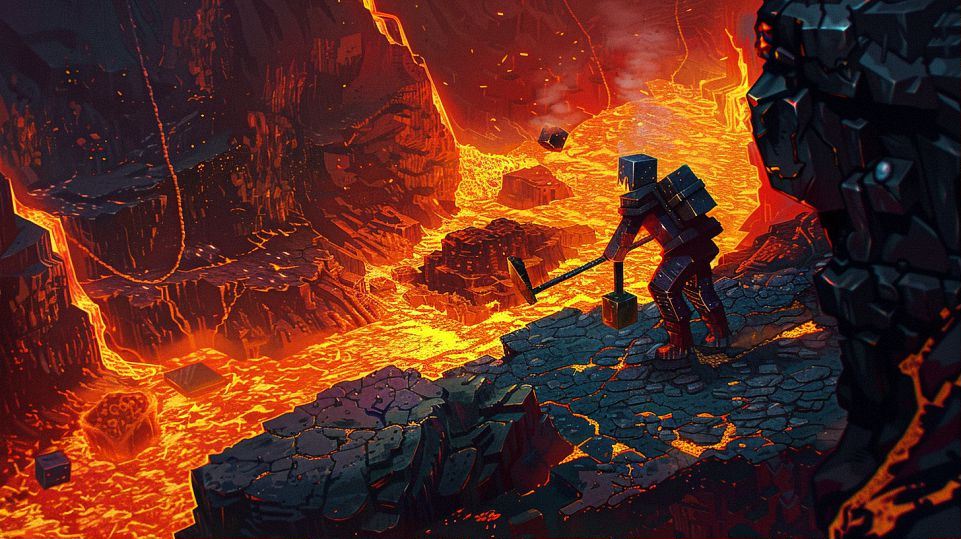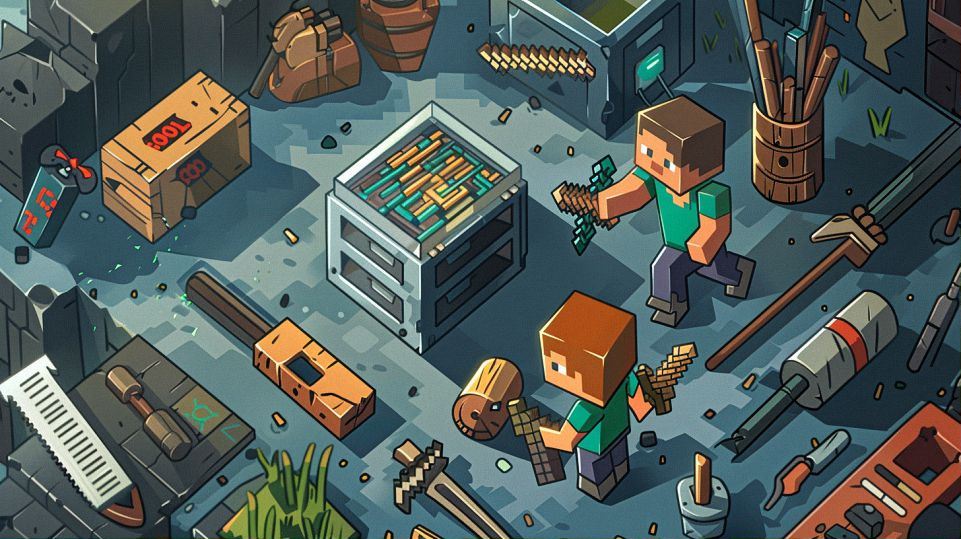Iron Farm Optimization: Maximize Efficiency in Minecraft


In the vast world of Minecraft, mastering the art of iron farming can take your gameplay to new heights. Whether you’re a seasoned player or just starting your blocky adventure, understanding the basics of iron farms is crucial for resource management and progression.
Contents
ToggleWhy Iron Farms Matter
Iron is a fundamental resource in Minecraft, used for crafting everything from tools and armor to intricate redstone contraptions. Unlike other resources that can be mined or gathered, iron golems, the source of iron in the game, require a different approach. Iron farms provide a sustainable and efficient way to gather iron without the need for extensive mining or exploration.
The Role of Iron Golems
Iron golems are massive, humanoid creatures found in villages. They are created by players or naturally spawn to protect villagers and their homes. In the context of iron farms, iron golems play a pivotal role as they drop iron ingots upon defeat, making them a valuable source of this precious resource.
Understanding Iron Golem Spawning
Iron golems spawn under specific conditions, primarily in villages with a sufficient number of villagers and beds. Creating an environment that promotes iron golem spawning is the essence of an effective iron farm.
Farming Iron in Minecraft
Traditional mining is one way to obtain iron, but it can be time-consuming and may not yield enough iron for complex projects. Iron farms offer a more automated and reliable method of gathering iron ingots, allowing players to focus on building, exploring, and creating without worrying about resource shortages.
Designing an Efficient Iron Farm
The key to a successful iron farm lies in its design. Factors such as village layout, villager population, and golem spawning platforms all contribute to the farm’s efficiency. Players can experiment with different designs, from simple setups to elaborate structures, to find the best balance between resource output and ease of maintenance.
Redstone Automation for Iron Farms
Redstone contraptions can enhance the efficiency of iron farms by automating processes such as golem spawning, collection, and storage. Leveraging redstone mechanics and automation techniques can streamline the iron farming process, allowing players to maximize their iron yield with minimal manual intervention.
Conclusion
Mastering the basics of iron farms in Minecraft 1.20 opens up a world of possibilities for players. By understanding the role of iron golems, designing efficient farms, and incorporating redstone automation, players can ensure a steady supply of iron ingots for their adventures. Embrace the challenge, experiment with different designs, and watch your iron farm thrive in the vibrant world of Minecraft!

Creating a robust and efficient iron farm in Minecraft 1.20 requires careful planning and execution. Let’s delve into the essential steps and considerations to help you build a thriving iron-producing marvel in your world.
Choosing the Right Location
First things first, scouting for the perfect location sets the stage for a successful iron farm. Look for a spot near your base or a central hub where villagers naturally gather. Proximity to a village is key, as it ensures a steady population of villagers, essential for iron golem spawning.
Scout for Villages
Embark on an adventure to find nearby villages. Explore the surroundings and map out potential locations that meet the criteria for a conducive iron farm setup. Keep an eye out for villages with a healthy population of villagers, as they are integral to the farming process.
Constructing Farm Modules
Once you’ve identified the ideal location, it’s time to roll up your sleeves and start building. Iron farms typically consist of modular units designed to optimize iron golem spawning and collection efficiency.
Building Golem Spawning Platforms
Construct platforms where iron golems can spawn. These platforms should be elevated to prevent golems from wandering off and to facilitate easy collection of iron ingots. Utilize materials like stone bricks or iron blocks for durability and aesthetics.
Implementing Villager Chambers
Create designated areas for villagers within your farm modules. Villagers play a crucial role in golem spawning, so ensure they have sufficient space and access to beds for breeding and population maintenance.
Installing Collection Systems
Set up collection systems to gather iron ingots automatically. Redstone-powered hoppers and chests can streamline the collection process, allowing you to focus on other aspects of your Minecraft adventures.
Using Villagers for Efficiency
Villagers are more than just passive inhabitants in Minecraft—they’re your allies in iron farming. Harness their capabilities to boost the efficiency of your farm.
Breeding and Population Management
Maintain a stable population of villagers by providing enough beds and workstations. Breeding villagers ensures a consistent supply of golem-spawning potential, contributing to higher iron yields.
Golem Spawning Mechanics
Understand the mechanics of golem spawning to optimize your farm’s output. Factors such as villager population, beds, and gossip play a role in golem generation. Fine-tune these elements for maximum efficiency.
Redstone Automation for Iron Farms
To elevate your iron farm to the next level, consider integrating redstone automation for streamlined operations.
Automated Golem Defeat
Design mechanisms that automatically defeat spawned iron golems. Utilize lava blades, crushers, or other redstone contraptions to dispatch golems and collect their precious iron drops without manual intervention.
Storage and Sorting Systems
Implement redstone-powered sorting systems to organize collected iron ingots efficiently. Utilize chests, hoppers, and item filters to manage your iron output seamlessly.
Conclusion
Building an iron farm in Minecraft 1.20 is a rewarding endeavor that combines creativity, strategy, and technical prowess. By choosing the right location, constructing modular farm units, leveraging villagers effectively, and incorporating redstone automation, you can create a highly productive iron farm that fuels your adventures in the blocky world of Minecraft. Dive into the construction process, experiment with different designs, and watch your iron reserves flourish like never before!

Fine-tuning your iron farm in Minecraft 1.20 is the key to maximizing iron ingot production and efficiency. Let’s explore advanced strategies and techniques to optimize your farm and reap bountiful rewards.
Redstone Automation
Harness the power of redstone contraptions to automate crucial processes within your iron farm.
Automated Golem Defeat Systems
Implement automated systems to defeat spawned iron golems swiftly and efficiently. Explore options like lava blades, piston crushers, or dispenser mechanisms to streamline the golem defeat process.
Redstone Clocks for Timing
Utilize redstone clocks to time essential functions in your iron farm, such as golem spawning cycles and collection intervals. Redstone clocks provide precision control over farm operations, ensuring optimal resource output.
Upgrading for Higher Yield
Upgrade key components of your iron farm to boost production and yield.
Expand Golem Spawning Platforms
Increase the size and capacity of your golem spawning platforms to accommodate more golems simultaneously. This expansion leads to higher iron ingot yields per cycle, enhancing farm efficiency.
Enhance Villager Population
Focus on breeding and maintaining a robust population of villagers within your farm. More villagers mean increased golem spawning rates, translating to greater iron output over time.
Maintenance and Troubleshooting
Regular maintenance and troubleshooting are essential for keeping your iron farm running smoothly.
Inspecting Redstone Systems
Periodically inspect and maintain redstone automation systems to prevent malfunctions or downtime. Replace worn-out components and ensure proper wiring and connectivity for seamless operation.
Villager Management
Monitor villager populations and breeding rates to prevent overcrowding or depletion. Proper villager management ensures a steady supply of golem-spawning potential, optimizing iron production.
Conclusion
Optimizing your iron farm in Minecraft 1.20 requires a combination of strategic upgrades, redstone automation, and vigilant maintenance. By fine-tuning redstone mechanisms, upgrading farm components for higher yield, and proactively addressing maintenance and troubleshooting needs, you can achieve peak performance and enjoy a continuous supply of iron ingots for your adventures. Embrace the challenge of optimization, experiment with advanced techniques, and watch your iron farm thrive in the ever-evolving world of Minecraft!


